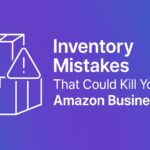
📖 Introduction:
Still searching for the perfect product to sell on Amazon?
In 2025, product research is no longer about luck—it’s about data, buyer behavior, and competition analysis. If you’re still guessing, you’re losing time, money, and momentum.
This blog breaks down proven, real-world product research tips used by successful sellers. Whether you’re launching your first product or building a brand, these strategies will help you validate demand, reduce risk, and discover products that sell consistently.
🚀 Product Research Tips That Work in 2025
✅ 1. Validate Demand with BSR (Best Seller Rank)
What to look for:
- BSR between 500 and 10,000 in your category = strong demand
- Check multiple listings—not just one
- Use Amazon’s category tree to explore sub-niches
💡 Pro Tip: Track BSR over time using Keepa or DataDive.
✅ 2. Check Competition Depth (Reviews Matter)
Why this works:
You don’t want to enter a niche where the top 10 listings all have 5,000+ reviews.
What to do:
- Find niches where 3+ listings in the top 10 have under 200 reviews
- This signals an opportunity for new sellers
- Use Helium 10’s Xray to scan review count instantly
✅ 3. Analyze Price Trends
What you avoid:
Don’t sell a product just because it looks profitable today.
What to check:
- Use Keepa to see if pricing is consistent
- Avoid items with price wars or massive drops
- Target products with a stable price point between $25–$50 (high margin, low risk)
✅ 4. Scan for Seasonality
Why it matters:
Seasonal products can lead to unexpected stockouts or dead inventory.
How to verify:
- Use Google Trends and Helium 10 Trendster
- Look at 12-month demand patterns
- Ask: Is this product viable year-round?
✅ 5. Dig Into Customer Pain Points
This is gold.
Your competitors’ reviews are telling you exactly what to improve.
How to leverage it:
- Read 3-star reviews for honest feedback
- Note complaints about quality, usability, packaging
- Use this insight to improve your product, listing, and differentiation
✅ 6. Find Keyword Gaps
Why keywords = opportunity:
If a product has demand but the top listings aren’t targeting the right keywords, you can outrank them.
How to find them:
- Use Helium 10 Cerebro or DataDive Reverse ASIN
- Look for high-volume keywords your competitors aren’t ranking on
- Optimize your listing around long-tail, buyer-intent terms
✅ 7. Use Niche Angles (Design, Bundle, Packaging)
This is how you stand out.
Don’t compete head-to-head—compete creatively.
Ideas:
Add accessories and sell as a bundle
Improve unboxing experience with better packaging
Position your product differently with branding or use-case angles
🧰 Recommended Tools for 2025
| Tool | Use Case |
|---|---|
| Helium 10 | Keyword + Product Validation |
| Jungle Scout | Product Discovery + Competition |
| DataDive | Deep Listing Analysis + Market Gaps |
| Keepa | Price & BSR History |
| Google Trends | Seasonal Search Volume |
✅ Final Thoughts:
Great product research removes 90% of the risk before you spend a dollar on inventory.
Instead of launching blind, use these tips to:
- 🧠 Validate demand with data
- 🕵️♂️ Uncover keyword and branding gaps
- 💸 Maximize your chance of success from day one
🚀 Need Done-for-You Product Research?
Alizatouch offers:
✅ In-depth market research
✅ Competitor analysis
✅ Keyword + niche gap identification
✅ Product validation & supplier matching
✅ Launch strategy tailored to your goals
📩 Let us find your next winning product—while you focus on the brand.

Inventory Mistakes That Could Kill Your Amazon Business




